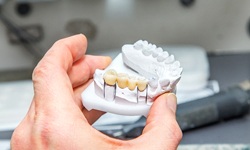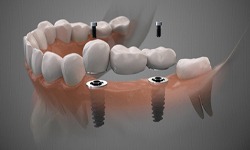


Tooth loss is a frequent issue that affects numerous people across the country. Approximately 178 million Americans are missing at least one tooth thanks to decay, gum disease, and other reasons. The good news is that just because you’ve suffered from tooth loss in the past doesn’t mean that you need to go forward with gaps in your smile. Dr. Jon Kirlough offers dental bridges in Middleburg Heights to replace your missing teeth without breaking the bank. For more information or to schedule a consultation, contact our office!

A dental bridge is a type of restoration that’s used to replace one or a few consecutive missing teeth. This could be anywhere from one to four teeth in a row. A bridge is composed of two crowns and a number of replacement teeth known as “pontics.” The crowns are anchored on the adjacent teeth or dental implants (depending on the type of bridge you opt for). Bridges can be made from many different materials, but porcelain is generally the best choice for a strong, natural-looking restoration.

If Dr. Kirlough determines that you make a good candidate for a dental bridge, there are two different types that you could end up with:
If you still have healthy teeth on each side of the gap that needs to be filled in, a traditional bridge is an ideal option. The teeth that support crowns are known as abutment teeth, and they need to be altered slightly for the bridge to fit properly. This restoration can be placed in just a few visits and is generally more affordable than its implant counterpart.
Dental implant bridges can be used when three or more missing teeth are in a row. Instead of being placed over abutment teeth, the crowns are placed on the titanium implants that merge with the jaw and act as artificial tooth roots. Implant bridges tend to last longer than traditional ones on average, and they help to prevent bone loss from occurring as a result of tooth loss.

A traditional dental bridge is a relatively simple and cost-effective option for replacing missing teeth. In addition to providing strength and stability for chewing and speaking, they help to maintain the shape of your face. They also keep your surrounding teeth from shifting out of place and leading to misalignment issues later on.